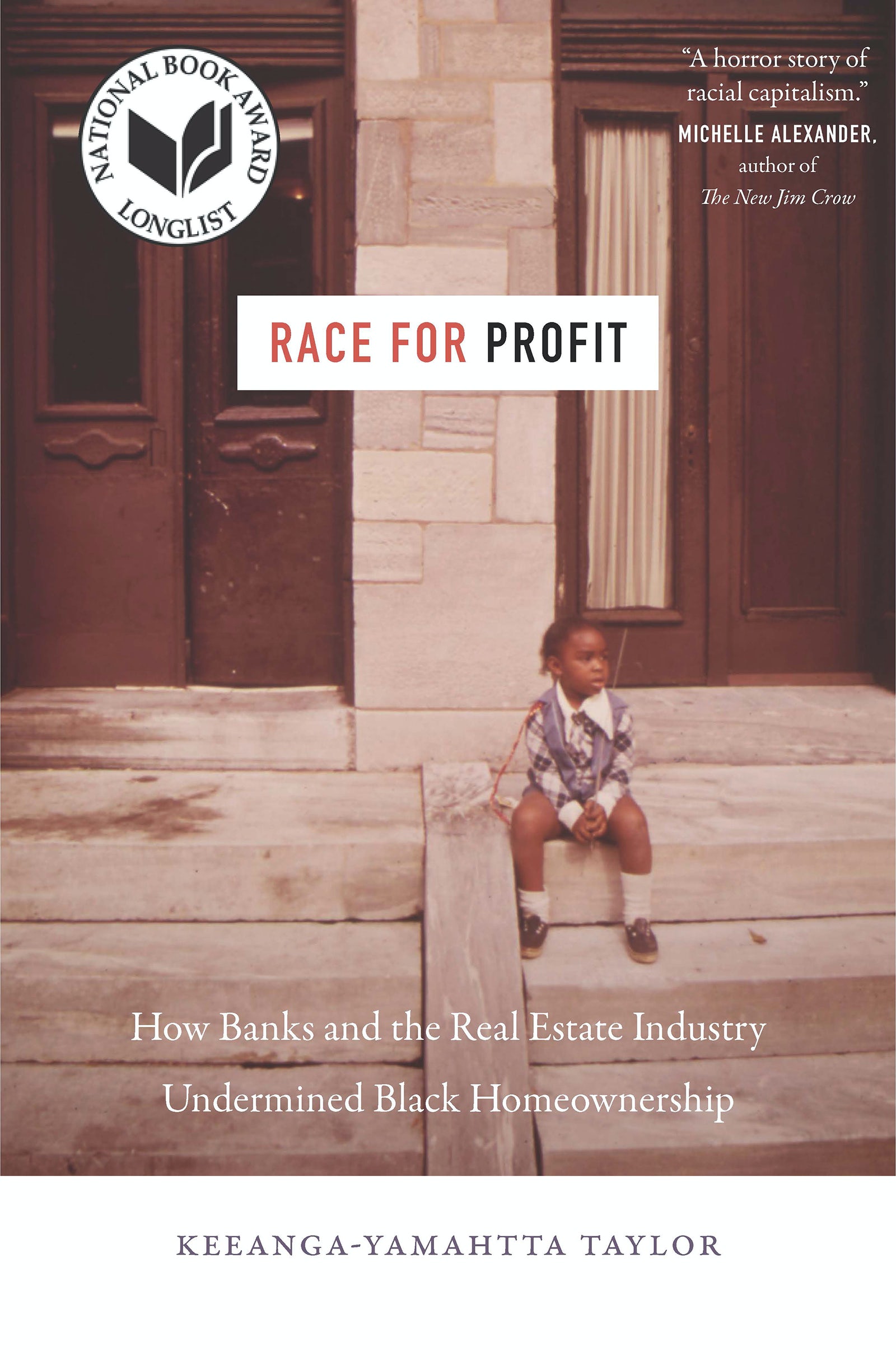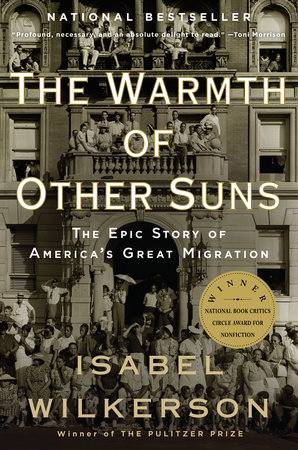Electric Lit relies on contributions from our readers to help make literature more exciting, relevant, and inclusive. Please support our work by becoming a member today, or making a one-time donation here.
.
At the root of social inequality in this country is something we’ve ignored for far too long: housing. Where we live matters. Housing drives all sorts of disparities in the U.S.: health, wealth, education, employment, exposure to the criminal justice system, even happiness. Yet, where we live is no accident: It is the result of decades of laws, policies, practices that inscribed the blueprint for racial and social inequality across the nation.
In The Voucher Promise, I take a look at how we provide housing for those who need it most, and how it is both part of the problem and the solution. The country’s largest federal housing assistance program, housing vouchers (colloquially known as “Section 8”), are a cornerstone of U.S. federal housing policy. Policymakers meant for vouchers to provide the poor with increased choice in the private rental marketplace, they even hoped vouchers could be a tool to dismantle segregation. But it’s not quite so simple.
The book shows how vouchers shape the lives of families living in a Baltimore neighborhood called Park Heights. I tell the stories of the daily lives of homeowners, voucher holders, renters who receive no housing assistance, and the landlords who provide housing. The story of Park Heights tells the larger story of housing policies that confined Black residents to poor urban areas across the country—redlining kept Black homeowners out of the neighborhood until the ’60s, and blockbusting allowed them in under predatory terms.
Voucher holders disproportionately end up in this area despite rampant unemployment, drugs, and abandoned housing. While housing vouchers are flawed in their current form, they have great potential to be a tool to work our way out of decades-old residential patterns. With some key reforms, vouchers can be expanded to better resist landlord discrimination, offering recipients basic housing stability and the chance to live in a wider range of neighborhoods.
In order to understand the landscape of housing in Park Heights, it is important to understand the history of housing discrimination, which has affected the life chances and well-being of poor minority Americans throughout the history of this country. Even as the federal government deployed housing assistance as a key tool in its war on poverty and urban blight, and the legal system has been used to combat discriminatory housing practices, housing discrimination has remained deeply entrenched in both private and public practice, as well as in the law itself. A number of recent books examine the role that housing and housing policy have played in erecting the landscape of inequality we see across the country today.
The Warmth of Other Suns by Isabella Wilkerson
In this epic account the Great Migration, Wilkerson tells the story of the generations of African Americans who picked up their belongings to flee the violent, segregationist South and trekked North, searching for the freedom to pursue a better life. This book, based on over 1000 interviews, bridges the divide between narrative and scholarship. Wilkerson follows the stories of three Black Southerners, and the three roads that many thousands of migrants took—following the major rail lines of the times—to cities like Detroit, New York, and Los Angeles. This population movement, from North to South, defines American cities today, setting the stage for a new era of Northern racist backlash, discrimination, and levels of segregation never before seen in American history.
American Apartheid: Segregation and the Making of the Underclass by Douglas S. Massey and Nancy A. Denton
In this now classic work, Massey and Denton propose that if we want to understand racial inequality today, we are missing a key link: segregation. Segregation, they say, is not a “natural” outcome of social and economic forces that shift populations around the city, nor is it a temporary process through which Black Americans have passed. The depth of segregation in urban areas is unprecedented, and it shows little signs of change. What’s more, segregation makes communities of color vulnerable, because it “intensifies and magnifies any economic setback these groups suffer and builds deprivation structurally into their social and economic environments.”
Massey and Denton elucidate the myriad private ways in which segregation has been reinforced over time, including the de facto mechanisms of segregation—the violent mobs of the early 1900s, threats, intimidation, and bombings of Black homes—even in the North. And they outline the institutionalization of discrimination within the real estate industry, and de jure (by law), throughout the mission of the Federal Housing Authority. These practices served simultaneously to keep Black Americans in poor segregated neighborhoods, while also aiding the departure of the white middle class to the suburbs.
Importantly, Massey and Denton argue that segregation is more than simply “living apart,” it is a planned, systematic “apartheid.” And until we dismantle both the private and public mechanisms that sustain it, we will continue to see the racial sharp divide among people in this country.
The Color of Law: A Forgotten History of How Our Government Segregated America by Richard Rothstein
Rothstein builds on the work of Massey and Denton to argue that while previous scholarships has highlighted the private, informal, and “extra” legal practices that create and sustain segregation—unscrupulous real estate agents, predatory mortgage lenders, private residential covenants, angry mobs—in fact these practices were supported, and even enhanced, by explicit, de jure, law and public policy. He enumerates a range of policies from zoning law, to police “protection” (or lack thereof), “sundown towns,” deed restrictions, highway construction that ripped through communities of color, and wealth building tools such as the mortgage interest tax deduction—all of which support and sustain residential racial segregation. Rothstein emphasizes that the effects of these laws are ongoing and will continue to do damage until they are dismantled.

Race for Profit: How Banks and the Real Estate Industry Undermined Black Homeownership by Keeanga-Yamahtta Taylor
The failure of the U.S. to provide safe, affordable housing on a large scale, Taylor argues, is directly tied to the government’s outsourcing of housing to the private market. Profiteering investors have their own set of incentives, and building safe, affordable housing is simply not as lucrative as building million-dollar condos. From redlining—where Black Americans were excluded from federal homeownership financing—to what Taylor calls “predatory inclusion”—where they were exposed to real estate exploitation—U.S. federal housing programs have long been a tool to protect and promote the financial interests of the private banking and real estate industries, rather than those of ordinary people.
Family Properties: How the Struggle Over Race and Real Estate Transformed Chicago and Urban America by Beryl Satter
By retracing the footsteps of her own father—both a civil rights attorney and a property owner—Satter outlines an ecosystem of players who shaped the housing landscape in postwar Chicago. She tells the story of the federal policies that gave birth to a dual housing market, one for Black Americans and one for white Americans, and the landlords and speculators looking to profit from this state of affairs. A speculator is someone who takes on risk in order to make a profit, by buying low and selling high. In Chicago, in the first half of the 20th century, speculators did this at the expense of Black homeowners and their livelihood. A house that a speculator bought one month for $4,000 from a white family, could be sold the next to a Black family for $14,000. The harsh contract terms and inflated prices were not meant to “sell” the home to Black families, but to swindle them, push them out, only to defraud another family. This practice led to deferred maintenance, poor conditions, and overcrowding, and precipitated racial turnover and rapid neighborhood economic decline. In turn, this visible blight fueled white racism. Satter’s story is not of white flight from declining neighborhoods, but of white exploitation and plunder of what these neighborhoods did have—riches, in the form of housing stock—essentially, destroying these neighborhoods and the livelihoods of the people who had risked everything to buy a home in them.
Stuck in Place by Patrick Sharkey
Deploying mountains of comparative data from the last half-century, Patrick Sharkey shows how Black and white Americans live in neighborhoods that are so different they can barely be compared. While only 4% of white Americans were raised in poor neighborhoods, for Black Americans this number is 62%. Inequality between Black and white households has barely changed since 1970. Patrick Sharkey shows how important neighborhoods are in explaining persistent racial inequality in this country, demonstrating how the poverty rate and racial composition of neighborhoods endure over time and across generations of families. One of the central tenets of the American Dream is the idea of social mobility—that it is possible to move up in the world, to get a better job, move to a safer neighborhood, buy a bigger house—yet, as Sharkey shows, for some groups in the U.S., this is simply not possible.
Manufactured Insecurity: Mobile Home Parks and Americans‘ Tenuous Right to Place by Esther Sullivan
Trailer parks and mobile homes make up the largest segment of the unassisted affordable housing market in this country. And while most mobile homes aren’t actually ambulatory, most mobile home owners don’t actually own the ground beneath them. This makes them susceptible to eviction in a way that homeowners typically are not. Through the detailed stories of the residents Sullivan got to know personally, she highlights the largely unseen and highly unstable nature of the manufactured home industry.

Evicted by Matthew Desmond
In this Pulitzer Prize-winning book, Desmond tells the gut-wrenching story of the “hidden housing problem”: eviction. While we typically think of poverty as causing housing instability—a family loses their income, cannot pay rent, and then gets evicted from their home—Evicted shows how we have been looking at things upside down. In fact, he argues, housing instability causes poverty. When a person gets evicted, their job is jeopardized, their children’s grades are threatened, their mental and physical health at risk. Through the personal stories of several families and the landlords who house them, Desmond shows the devastating effects of a housing system that does more harm than good for so many who live in this country.







